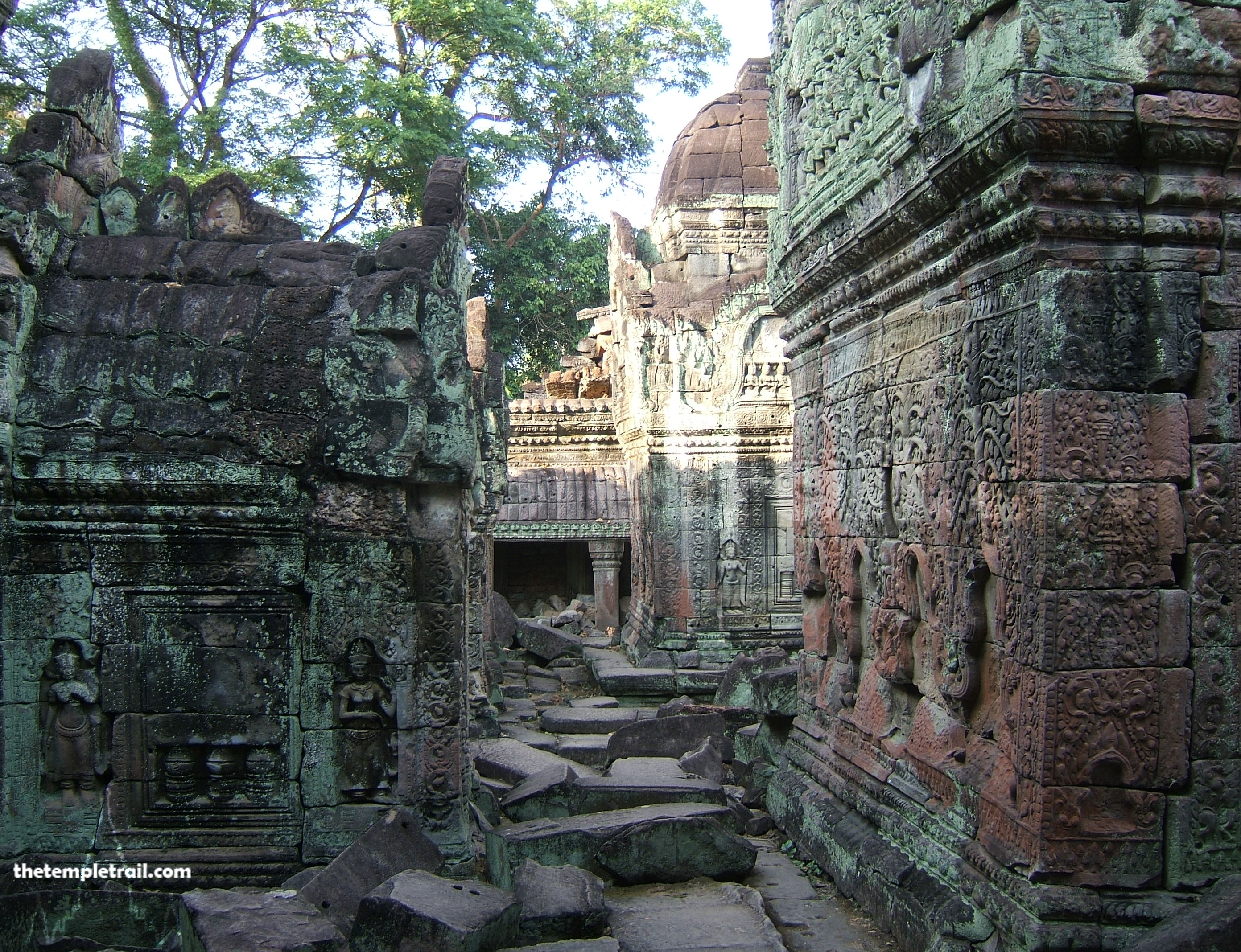The road from Ubud snakes through the sweltering jungle. Tropical flora flickers past your eyes as your car tunnels through the humidity. The sun splinters through the canopy and makes tiger stripes of shadow on the tarmac. Your driver is a little skittish. He has been informed by his boss that the police have set up checkpoints to stop unlicensed drivers. Despite being very capable, he does not have the requisite paperwork. He takes back-roads and small track-ways that slice through the overgrown landscape. His head constantly straining ahead, he is keeping lookout for the authorities. He has assured you there is nothing to be concerned about, but his face tells a different story. Eventually, the inevitable main road needs to be traversed and the predictable checkpoint looms on the horizon. The driver, feeling that he has been seen, decides not to U-turn and try a different route. The car comes to a stop, the driver gets out and hands something to the policeman, gets back in the car and drives away. You immediately understand that money has changed hands. Not one word needed to be spoken between the driver and the policeman. Both men knew what they needed to do. Soon you are back on target and barreling toward a spiritual respite. Your car pulls up in a car park and you are ushered down a set of steps that descend into a valley. At the bottom, you spy the wonderful carved cave entrance that is such an iconic part of Goa Gajah (Elephant Cave).
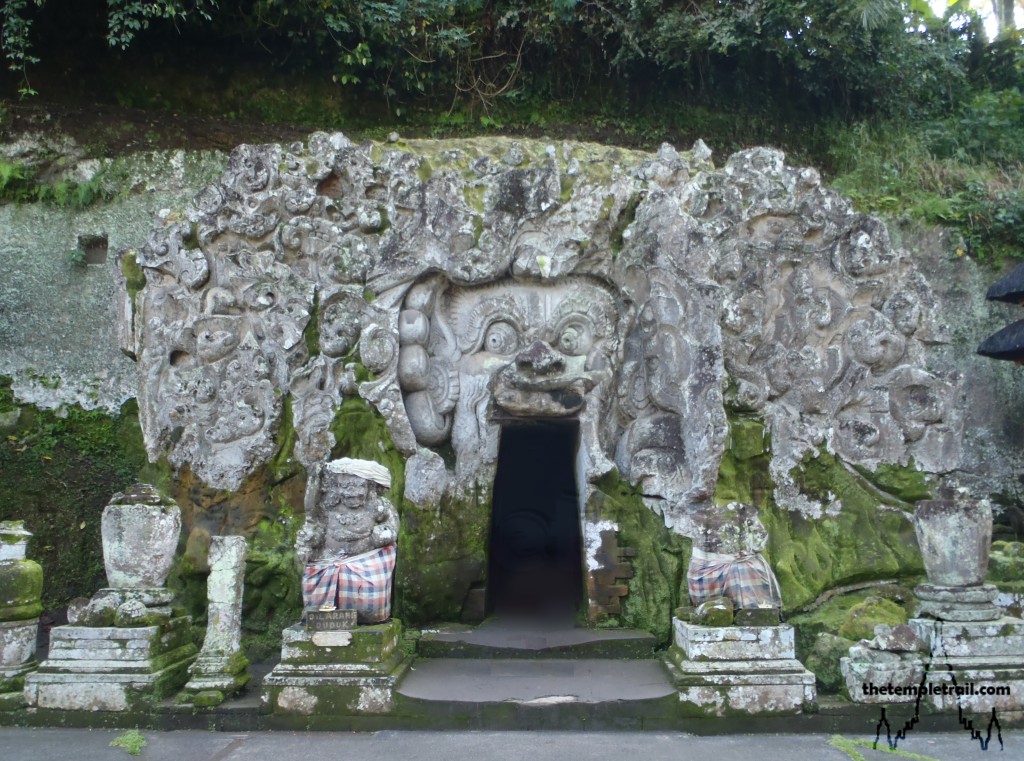
Used since the 8th or 9th century, the site was a retreat for both Shiviite priests and Buddhist monks. It is sacred due to the meeting of water. The cave itself is at the confluence of the Kali Pangkung River and the Petanu River. The concept of mixing water is considered magical to the Balinese and the positioning of the sanctuary is indelibly linked to this. It symbolizes the idea of Rwabhineda (two differences). Further down the valley is the second part of the site: the ruins of a Buddhist hermitage. The proximity of the two sanctuaries reinforces the spiritual significance of the site to the local Balinese people.
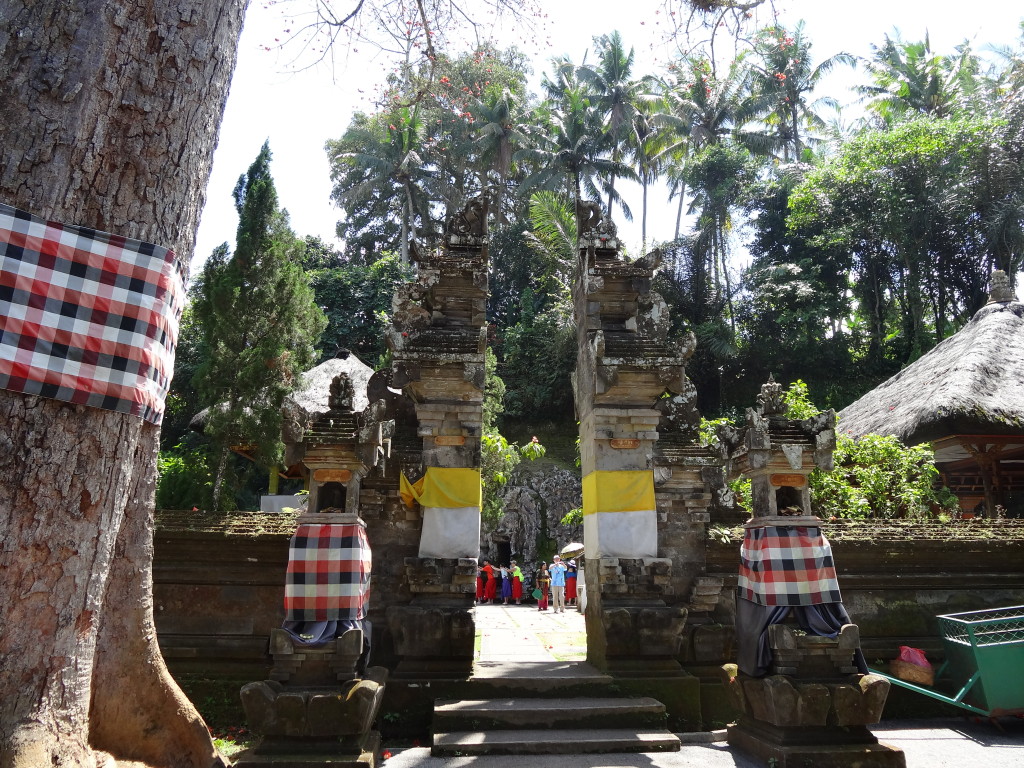
The demon carved into the cave front was thought to be an elephant by early chroniclers, but the name more likely comes from another source. Two inscriptions of the 11th century King Anak Wangsu refer to a place named Ratnakunjarapada (Jewel Elephant Village) as a hermitage. There are also several references throughout the 11th to 14th centuries to Lwa Gajah or Air Gajah (Elephant River). Not only is there no river by that name currently, but there have never been elephants on the island of Bali. The name is probably a homage to Kunjarakunjadesa (Elephant Forest Village). The Indian seer Rsi Agastya lived in that place in central India and his teachings were transmitted to Bali. This would also account for the forest carvings on the façade of the cave mouth.
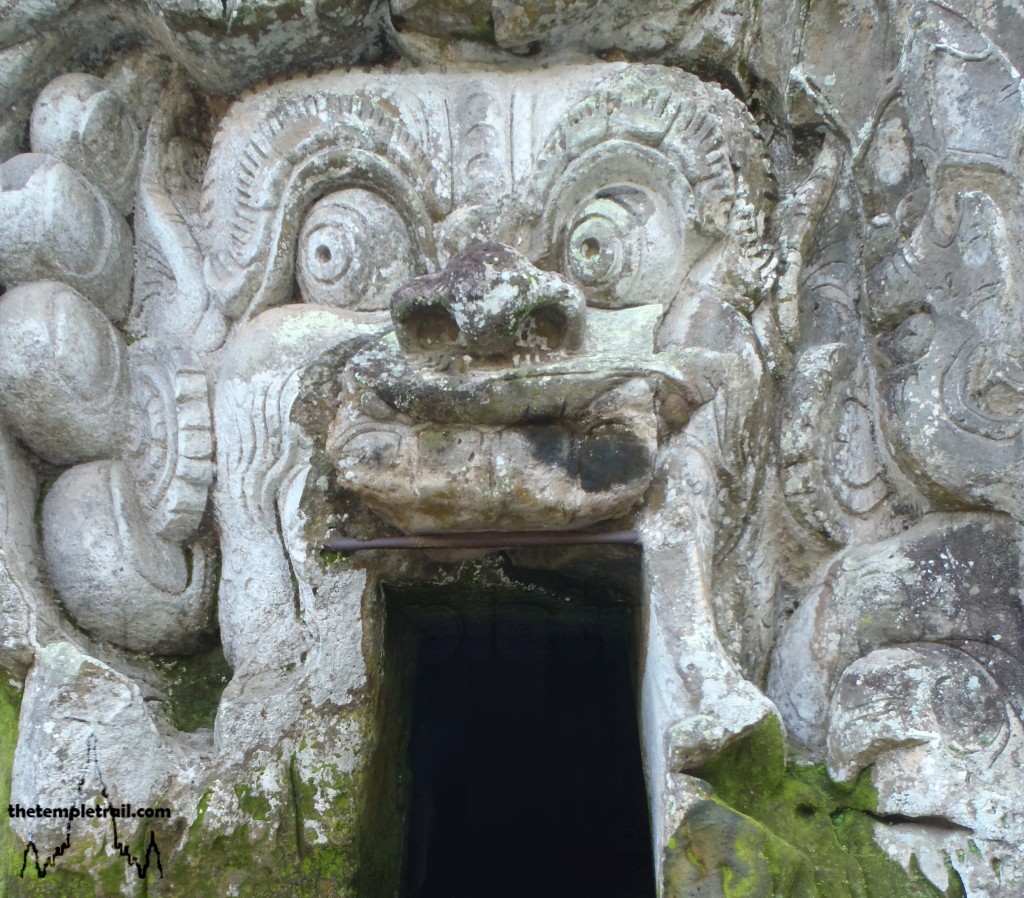
The gaping demonic mouth that you must enter belongs to Bhoma, an earth god and son of Wisnu (Viṣṇu) and Ibu Pertiwi (Pṛthvī – Mother Earth). It has sometimes been suggested that the fearsome maw belongs to Rangda, the Balinese witch queen, but the evidence would suggest this is not the case. Bhoma is the embodiment of both water and earth due to his father being a water god and mother an earth goddess. The relief-work surrounding him is of a forest and serves to further identify the figure as Bhoma (his name translates as ‘born of the earth’. The relief also shows the importance of the site as representative of Mount Mahameru (Meru), the abode of Brahma and the other gods. The kori agung (entrance gate) of a pura (temple) in Bali, usually has a depiction of Bhoma and vegetation on it. This is symbolic of the tough ascent through dense forest at the base of the mountain that you would need to make in order to meet the gods. Bhoma’s eyes look to the west and, combined with the remains of brick construction in that direction, indicate that the original entrance to the pura was located there.

Entering the mouth of Bhoma and into the very bowels of earth, you stand in a T-shaped cavern. Directly in front of you lies a fragment of some unidentified statue. You veer to the left and towards a Balinese sarong swaddled statue of Ganesa (Gaṇeśa – the elephant-headed god). He is known as Wighneswara (Vighneśvara), the Lord of Obstacles, and is prayed to in order to have him remove obstacles from your life. Here, he is depicted as a war god and he holds an axe and his broken tusk. After having your path cleared, you head back the way you came and down the other branch of the T. Here you find that a triple-lingga (lingam – a phallic symbol) rests at the other end of it. The lingga is a symbol of Siwa (Śiva), the supreme god of Shaivism and one part of the Hindu trimūrti (trinity) along with Brahmā and Viṣṇu. Siwa is the father of Ganesa and it was his devotees who created the hermitage here at Goa Gajah, despite the myth that the cave was carved by the legendary giant Kebo Iwa using only his fingernails in a single night.
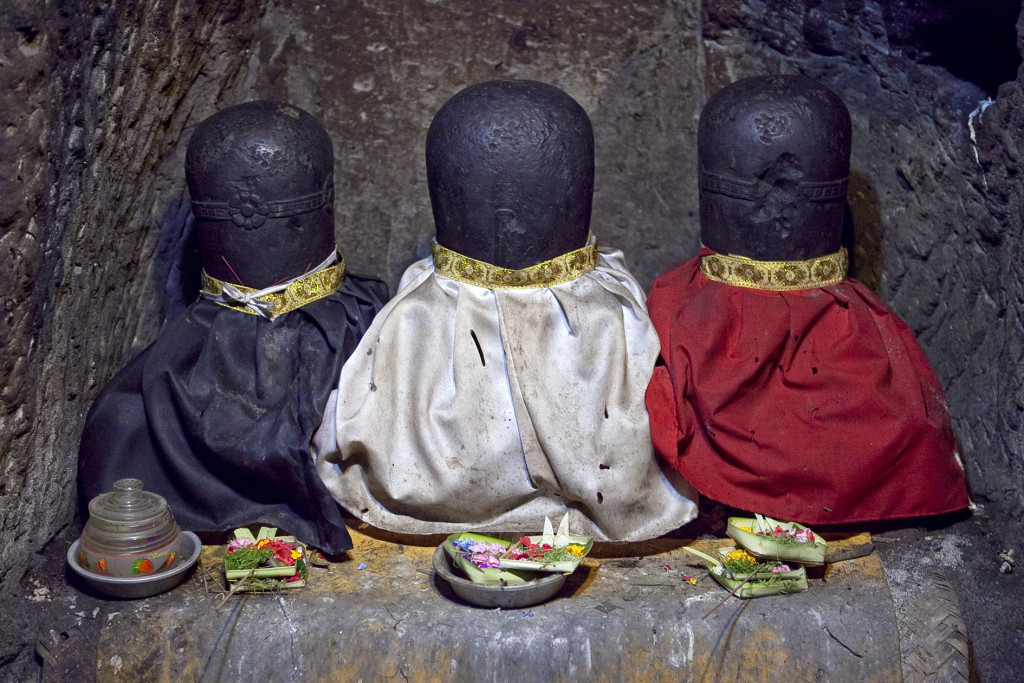
Bursting forth from the earth and out into the light, your eyes slowly become accustomed to the blinding Balinese light. You wander in a half daze towards a sunken area of the complex. You climb down a set of steps into the Patirtaan Pond (bathing place) filled with tirta (sacred water). Unearthed in 1954, the holy pond is where worshippers would ritually cleanse and purify themselves. The area is divided into three pools. The two larger pools each have a set of standing figures in them. In each, a male figure is flanked by two female figures and the tirta spouts from each statue. These are Widyadara and Widyadari (Vidyādhara; Upa-devas or demigod attendants of Śiva and guardian angels in Bali).
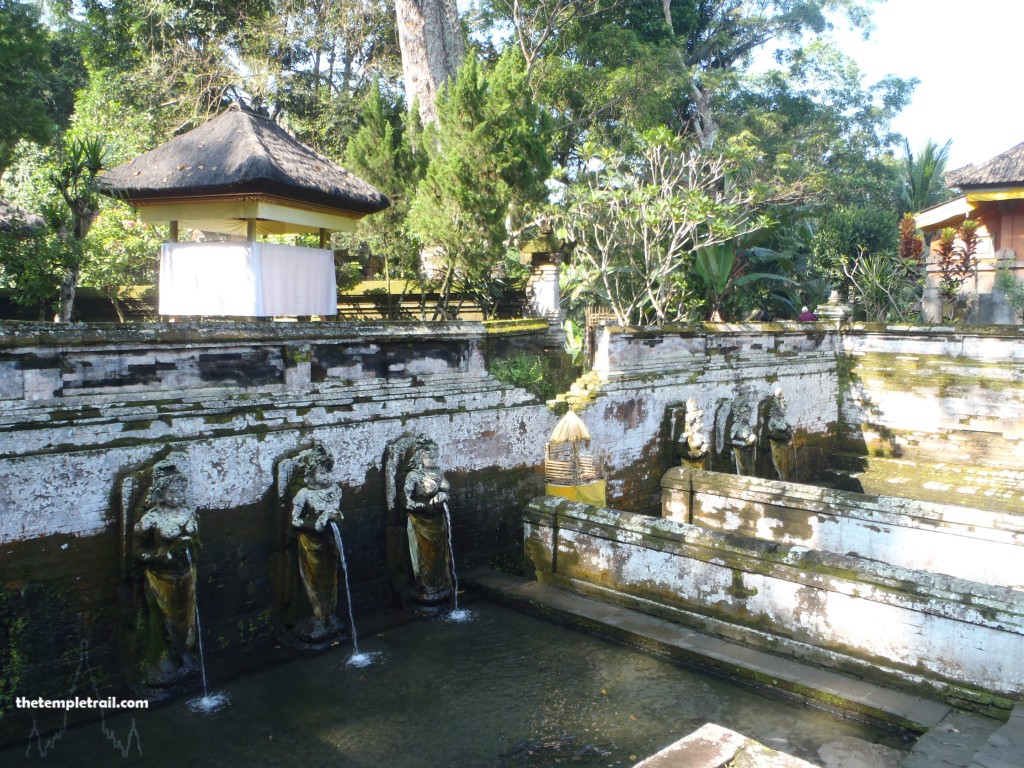
The water is from a spring that is located to the east of the bathing place. In between the two pools is a smaller central area that has the base of a statue. The identity of the statue that once stood there is unknown, but it clearly was an important figure. The presence of seven statues in the bathing pond is symbolic of Sapta Tirtha (seven holy waters), which in turn represents the Sapta Nadi (seven holy purified rivers: Gangga, Sindhu, Saraswati, Yamuna, Godawari, Serayu and Narmada). By cleansing yourself in the tirta of Patirtaan Pond, you are partaking of the waters of all seven of the holy rivers.

Returning back up the steps, you retire to the southeastern area of the complex and down a set of stairs that take you in the direction of the sound of rushing water. Abundant water is the general theme of the site, but here, something magical is happening. As you drop deeper into the forested area, you see a set of what appear to be giant boulders covered in moss as a stream rushes around them. As you make it to the jungle floor, closer inspection reveals their true nature. They are fallen blocks of carved relief from the eroded cliff-face. The small tributary stream that feeds into the Petanu River courses around the blocks that are reminiscent of the carvings at the later site of Gunung Kawi.
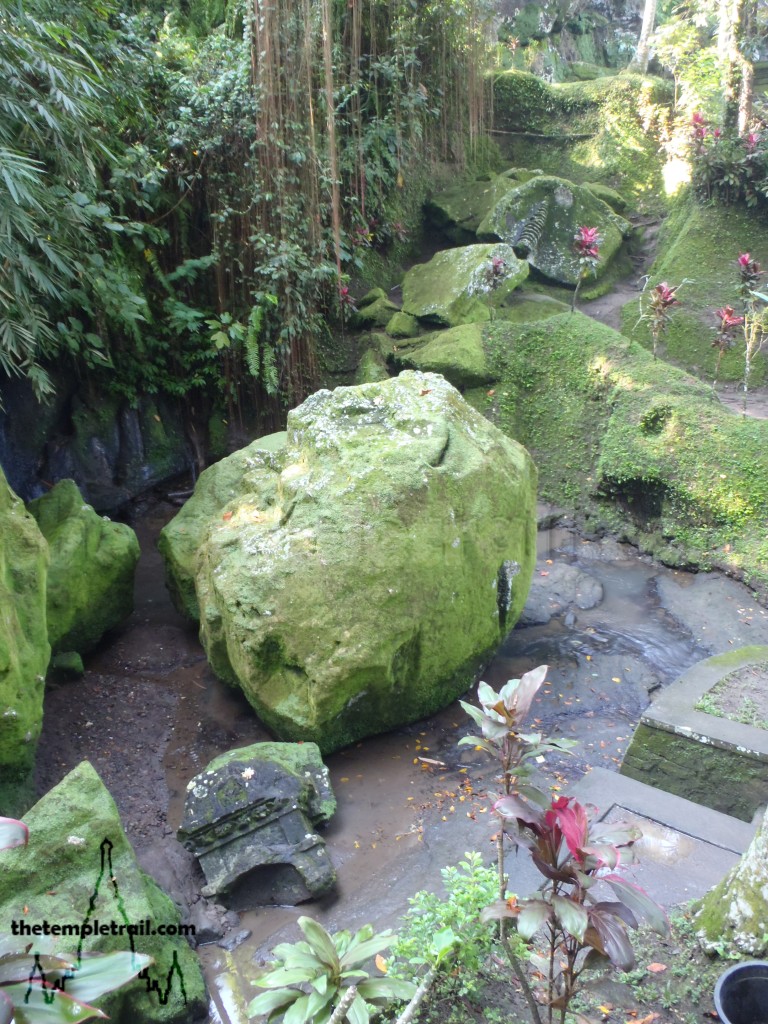
The Buddhist usage of the area may or may not be older than the Shiviite usage. Not much is known about the exact origins of any part of the site. It is mostly speculation based on historic inscriptions throughout the centuries. Regardless of the facts, the Buddhist section of the site is beautiful in its decay. The green moss highlights the umbrella reliefs and the elaborate carving of what was once attached to the cliff itself. After contemplating impermanence in the shady forest setting, you realize it is time to emerge back out into the unforgiving sunlight.
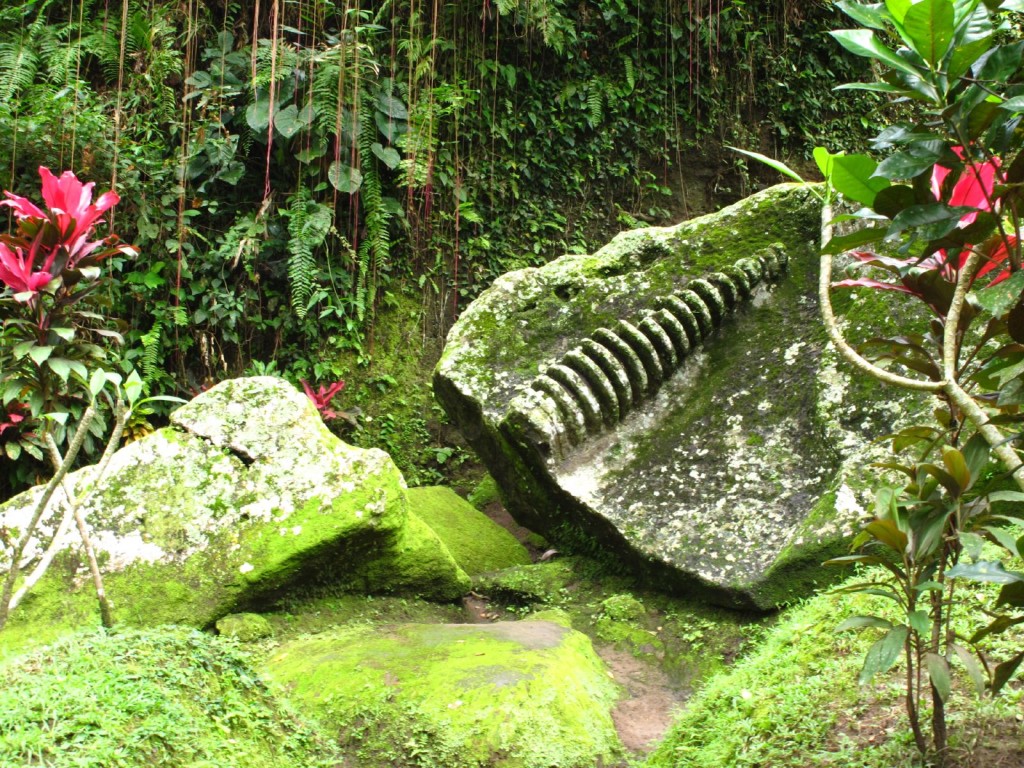
As you come back up and into the Hindu section of the site, your eye is drawn to a small sheltered building that houses three ancient statues. One is of Ganesa, one is a demon and the other is of Men Brayut (Hariti), demoness protector of children. To the Hindus, she is a goddess of fertility and the Buddhists regard her as a former child-eating demoness who converted to Buddhism and renounced her wicked ways. Due to her past cannibalistic tendencies, she has an association with the child-eating witch queen Rangda. This statue is relatively rare as she is more commonly found in pura dalem (death temples). Mythically, her and her husband Pan continuously produced multitudes of offspring.
Moving away from the fearsome statue, you start your ascent of the staircase and back up to your car and driver. The climb lifts you from your serene haze and into the stark reality of checkpoint evasion. The prospect of darting along the bumpy jungle roads in constant vigilance is sobering. The ancient vision of demons and gods lurking in the forest draws an apt parallel to the possibility of policemen hiding behind trees ready to pounce on unsuspecting drivers. Getting in the car and closing the door, you tear off into the unknown.
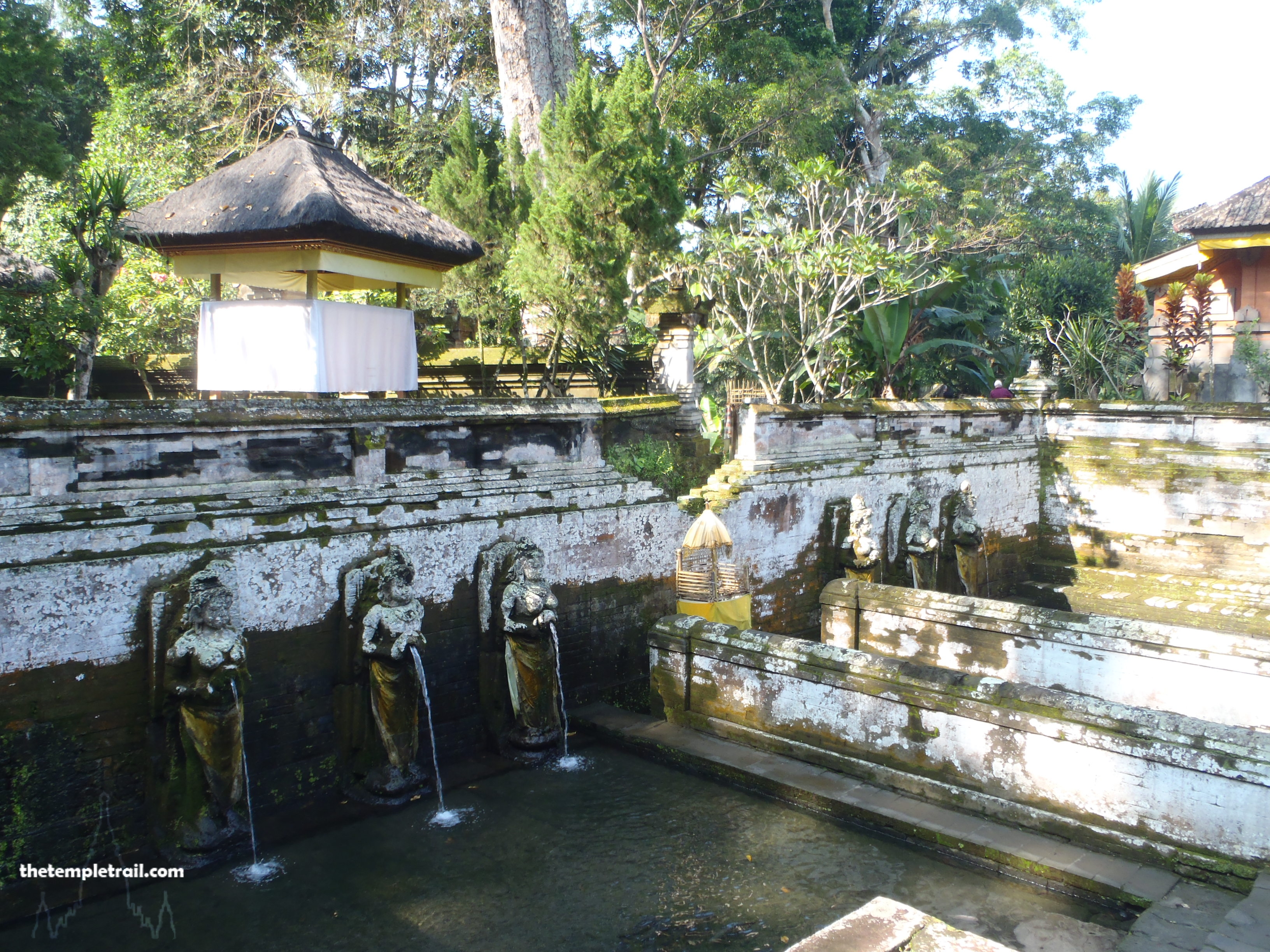
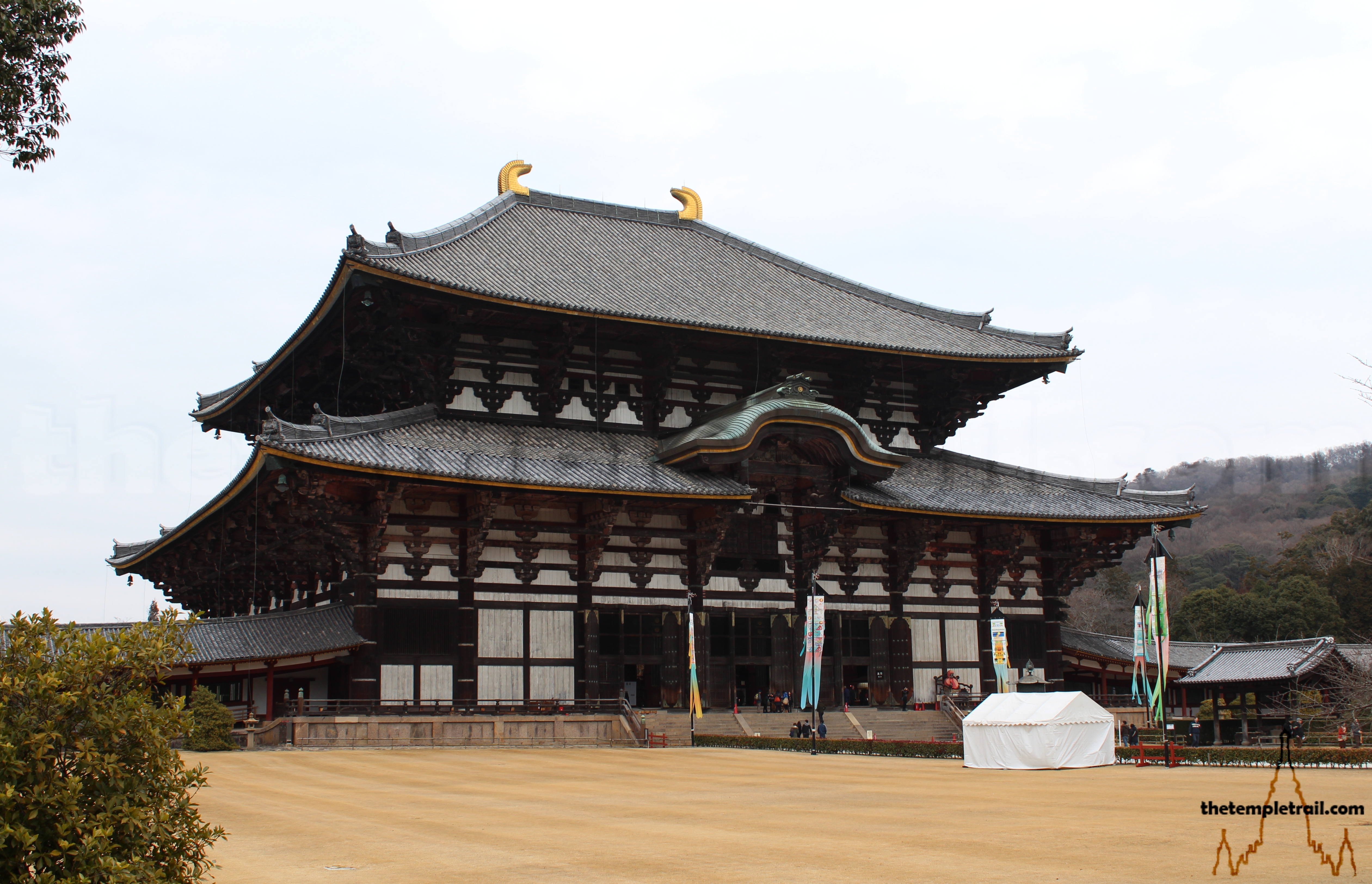 Tōdai-ji
Tōdai-ji